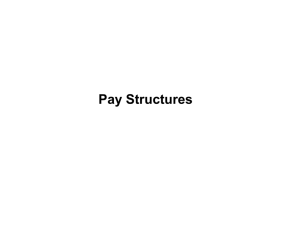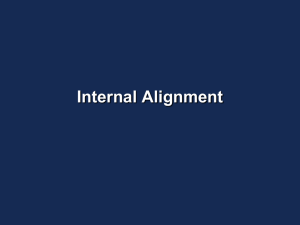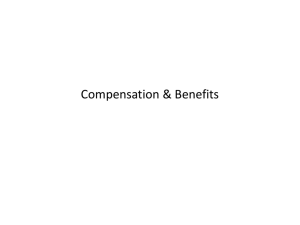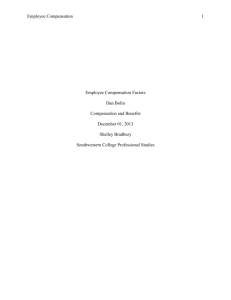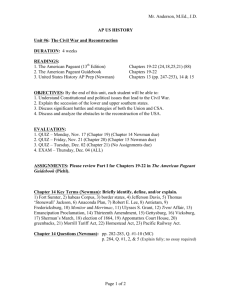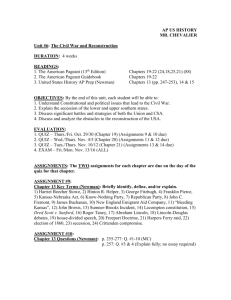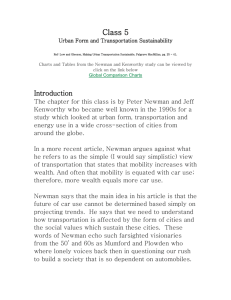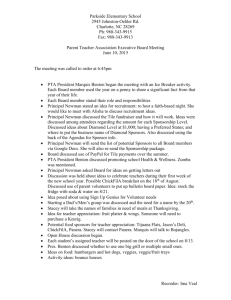Exhibit 7.5: What Shapes External Competitiveness?
advertisement
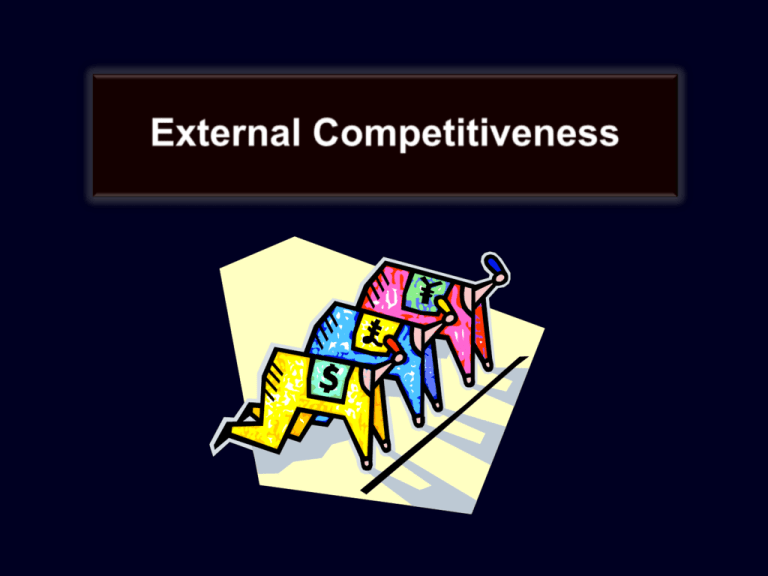
What It Is External competitiveness refers to the pay relationships among organizations—the organization’s pay relative to its competitors (Milkovich, Newman, & Gerhart, 2011) Exhibit 7.5: What Shapes External Competitiveness? LABOR MARKET FACTORS Nature of Demand Nature of Supply PRODUCT MARKET FACTORS Degree of Competition Level of Product Demand EXTERNAL COMPETITIVENESS ORGANIZATION FACTORS Industry, Strategy, Size Individual Manager (Milkovich, Newman, & Gerhart, 2011) Operationally External competitiveness is expressed by: 1. Setting a pay level in relation to competitors 2. Determining the mix of pay forms relative to those of competitors (Milkovich, Newman, & Gerhart, 2011) Pay Level Pay level refers to the average of the array of rates paid by an employer: (base + bonuses + benefits + value of stock holdings+ other incentives) / number of employees (Milkovich, Newman, & Gerhart, 2011) Pay Level Decisions Impact Labor Cost Pay Level x Number of Employees = (Milkovich, Newman, & Gerhart, 2011) Labor Costs Typical “Labor Market” Assumptions Employers always seek to maximize profits People are homogeneous and therefore interchangeable Pay rates reflect all costs associated with employment Markets faced by employers are competitive (Milkovich, Newman, & Gerhart, 2011) Exhibit 7.16: Some Consequences of Pay Levels (Milkovich, Newman, & Gerhart, 2011) Competitive Pay Policy Alternatives Traditional More Recent Alternatives Lead Policy Flexible Policies Match Policy Employer of Choice/Shared Choice Lag Policy (Milkovich, Newman, & Gerhart, 2011) Lead Policy Maximizes the ability to attract and retain quality employees and minimizes employee dissatisfaction with pay May also offset less attractive features of work If used only to hire new employees, may lead to dissatisfaction of current employees (Milkovich & Newman, 2008) Pay with Competition (Match) Attempts to ensure an organization’s – Wage costs are approximately equal to those of its product competitors – Ability to attract potential employees will be approximately equal to its labor market competitors Avoids placing an employer at a disadvantage in pricing products or in maintaining a qualified work force (Milkovich & Newman, 2008) Lag Policy May hinder a firm’s ability to attract potential employees If pay level is lagged in return for promise of higher future returns – May increase employee commitment – Foster teamwork – May possibly increase productivity (Milkovich & Newman, 2008) Flexible Policies Employers have more than one pay policy Policy may vary for different occupational families Alternative policies include – Performance driven – Market match – Work/life balance – Security (Milkovich & Newman, 2008) Employer of Choice/ Shared Choice Companies compete based on their overall reputation as a place to work Shared choice begins with traditional options of lead, meet, or lag – Adds a second part – offers employees choices (within limits) in the pay mix Similar to employer of choice in recognizing importance of both pay level and mix Employees have more say in forms of pay received (Milkovich & Newman, 2008) Exhibit 7.10: Probable Relationships Between External Pay Policies and Objectives (Milkovich, Newman, & Gerhart, 2011) What are Pay Forms? Pay forms are the various types of payments, or pay mix, that make up total compensation. (Milkovich & Newman, 2008) Two Companies: Same Total Compensation, Different Mixes (Milkovich & Newman, 2008) Pay Mix May Vary Within the Structure (Milkovich & Newman, 2008)
